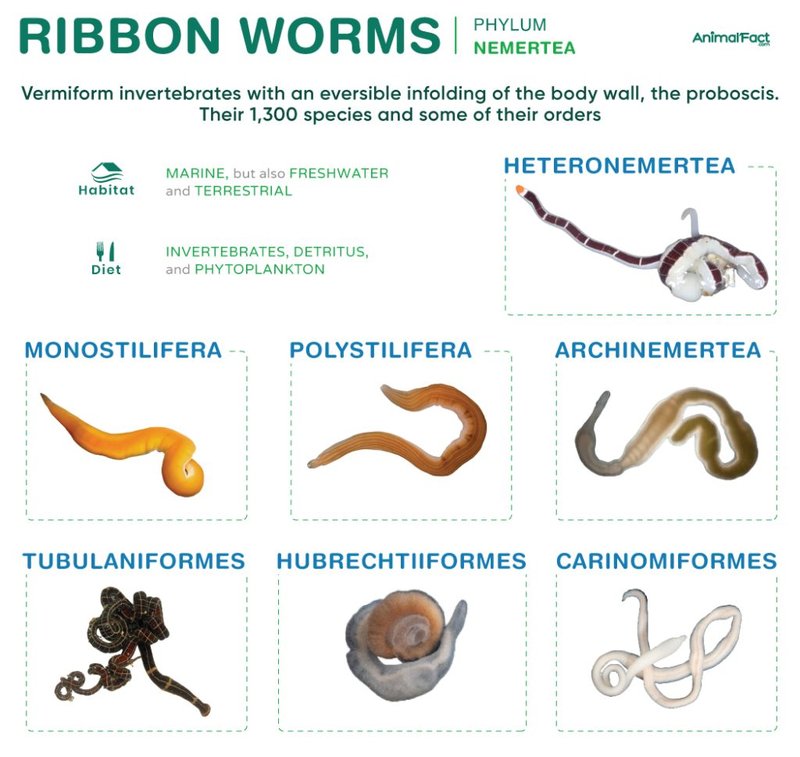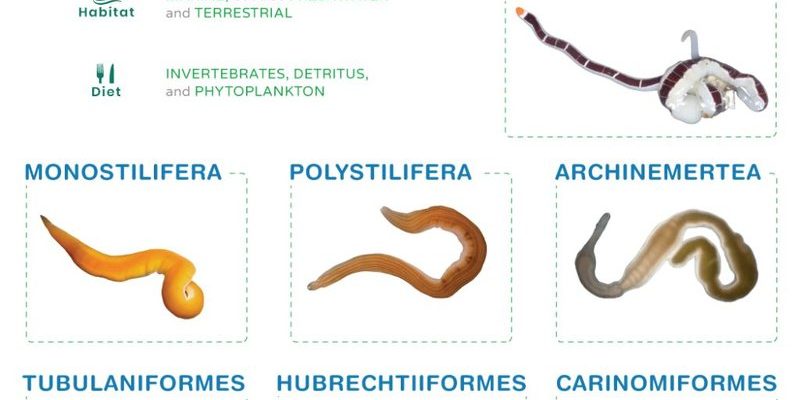
Imagine these worms as living elastic bands, able to manipulate their bodies to navigate their surroundings. This ability isn’t just for show; it helps them hunt prey, evade predators, and even move through their habitat. Intrigued? Let’s dive deeper into this wonderful world and explore the mechanics behind how ribbon worms expand and contract their bodies.
What Are Ribbon Worms?
Ribbon worms, or *Nemertea*, are a unique group of invertebrates found in various marine environments, from shallow coastal waters to the deep sea. They come in a range of sizes, from just a few centimeters to over 30 meters long! These creatures are often brightly colored and have a long, slender body that gives them their name.
They possess a fascinating structure called a proboscis, which they can shoot out to capture prey. This remarkable feature adds to their allure, demonstrating their active, predatory nature. Ribbon worms are also known for their impressive regenerative abilities, allowing them to regrow parts of their bodies if injured. With all these unique traits, it’s no wonder they deserve our attention!
How Do Ribbon Worms Expand Their Bodies?
The expansion of a ribbon worm’s body is primarily due to the combination of fluid movement and muscular control. You might think of it as a balloon filling with air. When they want to expand, ribbon worms pump fluid into their body cavity, called the coelom. This process increases the pressure inside, stretching their body outward.
But wait! It’s not just about pumping fluid. The muscle layers in their body play a crucial role too. These muscles can contract or relax, allowing the worm to stretch in different directions. With this combination of fluid dynamics and muscle control, ribbon worms can elongate or thicken as needed, making them agile hunters.
How Do Ribbon Worms Contract Their Bodies?
When it’s time to contract, ribbon worms rely on the same muscle layers. They reverse the fluid pumping process, allowing their coelomic fluid to flow back to where it originated. This action lowers the internal pressure, making the worm shrink back to its original size.
Picture a sponge soaking up water—when you squeeze it, the water is pushed out, and it shrinks down. Ribbon worms do something similar, drawing on their muscular system to help with this contraction. Their body becomes more compact and streamlined, which is especially beneficial for escaping threats or squeezing into tighter spaces.
The Role of the Proboscis
Ah, the proboscis! This extraordinary feature is not only useful for hunting but also plays a part in body mechanics. When ribbon worms shoot out their proboscis to catch prey, the action can lead to a rapid expansion of their body.
Think about it: when they extend their proboscis, they engage additional muscles and create pressure changes, allowing for a brief moment of expansion. This unique interaction between their feeding mechanism and body movement showcases just how versatile ribbon worms are in utilizing body functions for survival.
Why Is This Ability Important?
Understanding how ribbon worms expand and contract isn’t just a fun fact—it’s vital for their survival. This ability helps them:
- Capture prey efficiently.
- Avoid predators by quickly retreating into crevices.
- Adapt to changing environments, whether navigating through sand or swimming in open water.
Their adaptability is a hallmark of many marine organisms, but ribbon worms take it to a whole new level. By mastering these movements, they can thrive in various habitats and ensure their survival through both active hunting and avoidance tactics.
Comparing Ribbon Worms to Other Marine Creatures
When you think about body expansion and contraction, you might compare ribbon worms to other marine animals. For instance, cephalopods like octopuses can change shape and color, using muscle control to adapt to their surroundings. Jellyfish also expand and contract, but they rely on a simple bell shape to do so.
While these creatures have their methods, ribbon worms stand out with their unique combination of fluid dynamics and muscular control. Their proboscis adds an extra layer of complexity. Both fascinating and functional, ribbon worms are a great reminder of the diversity found in nature.
Conservation and Ribbon Worms
As our oceans face challenges from pollution, climate change, and habitat destruction, understanding creatures like ribbon worms becomes even more important. They play a vital role in marine ecosystems, often contributing to nutrient cycling and serving as prey for larger animals.
You might be wondering how to help. Supporting ocean conservation efforts, reducing plastic use, and practicing sustainable fishing can all contribute to a healthier marine environment for these unique creatures. By protecting their habitats, we’re not just saving ribbon worms—we’re ensuring the balance of our oceans.
In summary, ribbon worms are incredible creatures that showcase the beauty of evolution and adaptation. Their ability to expand and contract with such precision is a testament to the wonders of nature, reminding us how interconnected all life is. So, the next time you think about the ocean, remember these fascinating worms and their elastic-like abilities!

